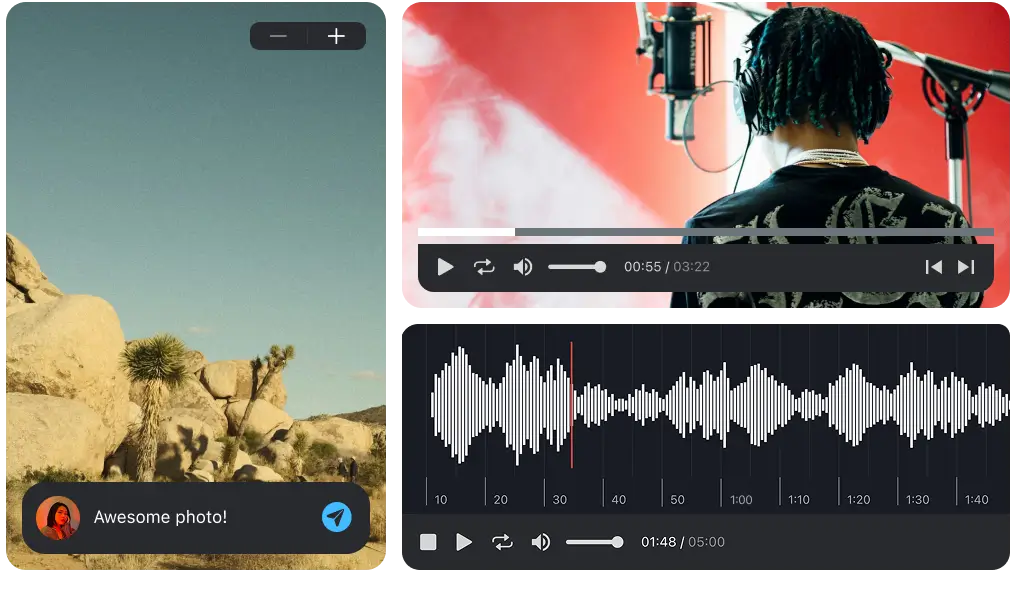What is a waveform?
A waveform in music is a visual representation of an audio signal. It can be described as a graph that represents the changes in amplitude over time. The waveform provides essential information about the audio signal, such as its loudness, frequency content, and duration.
Understanding waveforms
The horizontal axis of a waveform represents time, and the vertical axis represents amplitude. The higher the peaks on the waveform, the louder the sound at that particular moment. Similarly, the lower the troughs, the quieter the sound.
Waveforms are a fundamental concept in music production and sound engineering. They are used in digital audio workstations (DAWs) to visually represent audio files. However, it's important to note that while waveforms can give you a rough idea of these characteristics, they don't provide a complete picture. For a more detailed analysis of an audio signal, other tools like spectrum analyzers and phase meters are used.
Types of waveforms
There are several types of waveforms, each with its unique characteristics. The most common types are sine waves, square waves, triangle waves, and sawtooth waves. These waveforms are the building blocks of all sounds and are used in synthesis to create different tones and timbres:
- Sine waves are the simplest type of waveform. They consist of a single frequency and have no harmonics. This makes them perfect for testing audio systems and for use in synthesis to create smooth, pure tones.
- Square waves, on the other hand, contain a fundamental frequency and a series of odd harmonics. They produce a rich, hollow sound that is often used in electronic music.
- Triangle waves are similar to square waves, but they have fewer harmonics and produce a softer, more rounded sound.
- Sawtooth waves contain both odd and even harmonics, resulting in a bright and buzzy sound.
Importance of waveforms in music production
In music production, waveforms are incredibly helpful during the editing and mixing processes. Moreover, waveforms can also be manipulated to change the sound of the audio. This is done through processes like equalization, compression, and distortion.
Waveform editing
Waveform editing is a common task in music production. It involves manipulating the waveform to change the sound of the audio. This can be done in various ways, such as cutting and pasting parts of the waveform, adjusting the amplitude, or applying effects.
- Cutting and pasting parts of the waveform allows you to rearrange the audio.
- Adjusting the amplitude of the waveform changes the volume of the audio.
- Applying effects to the waveform can change the sound in more complex ways.
Waveform analysis
Waveform analysis is the process of examining the waveform to understand the characteristics of the audio. This can be done visually by looking at the waveform, or it can be done using software tools that provide more detailed information.
Software tools for waveform analysis can provide more detailed information. For example, a spectrum analyzer can show you the frequency content of the audio, and a phase meter can show you the phase relationship between different parts of the audio. These tools can be incredibly helpful for making informed decisions about mixing and mastering.
Waveform feedback
Waveform feedback is the ability to leave time-specific comments directly on the audio waveform within collaboration platforms like Pibox. This feature allows team members to give precise, contextual feedback on exact moments in the timeline—without relying on separate timestamp references. By visually anchoring comments to the waveform, the review process becomes faster, clearer, and far more intuitive.
- Leaving comments directly on the waveform helps avoid miscommunication. For example, a note about a vocal edit or timing issue can be placed exactly where it happens in the track.
- Visual feedback on the waveform improves collaboration between team members, especially in remote workflows. Everyone sees the same reference point in the audio.
- This method streamlines revisions by keeping all feedback centralized and tied to the actual content, reducing the back-and-forth and helping teams stay in sync.
Easier, faster way to collaborate in real-time, collect feedback, manage reviews, share, and finish your projects effortlessly.








